By Louise Irvine
Childhood seaside holidays evoke images of jellyfish washed up on the sand and groups of frightened but fascinated kids prodding them with toy spades. We were warned that they could still sting if the tentacles were hydrated which made swimming in the North Sea even more terrifying if a jellyfish was in sight. It was not until I discovered the ocean-inspired glass art at WMODA that I began to see the beauty in these ominous creatures.
A Smack of Jellyfish
A group of jellyfish is called a “smack” and they are found all over the world from surface waters to the deep sea. They are often very colorful and are mesmerizing to watch as they move through the water with their bells pulsating to propel them. The stinging cells in their tentacles are used to capture prey and defend against predators. Vast swarms of stinging jellyfish are now more common in northern coastlines due to global warming and stranded jellyfish can make beach walking more hazardous for humans and dogs.
Medusa
Jellyfish or sea jellies are the common names given to the medusa-phase of gelatinous marine animals with nearly transparent umbrella-shaped bells and trailing tentacles with stinging cells. Their name comes from the three monstrous Gorgons of Greek mythology who have venomous snakes instead of hair. Medusa’s staring eyes could turn onlookers to stone even after she was beheaded by the Greek hero, Perseus. Some species can injure swimmers with a sting like an electric shock which can be serious and even fatal.
A Japanese folktale about The Jellyfish and the Monkey explains how the boneless form of the creature came about as a punishment from the Dragon King of the Sea for failure to acquire the liver of a monkey as medicine for the ailing Queen. Jellyfish are considered a food delicacy in some Asian countries and they are sustainable and protein-rich.
Immortality
Jellyfish have been in existence for at least 500 million years and they are the oldest multi-organ animal group. They begin life as larva which attach themselves to a rock or similar surface and metamorphose into polyps. Colonies clone themselves and then bloom in vast numbers creating baby jellyfish. After the Medusa stage of its life, the jellyfish sinks to the ocean floor and its cells then reaggregate into polyps from which baby jellyfish emerge. Scientists discovered that this cycle of life continues over and over again, making the jellyfish immortal. Jellyfish also transformed biomedical research when it was realized that the green glowing protein found in some bioluminescent species, GFP for short, could be used to track how cancer cells or HIV infections spread.
Diaphanous Designs
A sparkling display of bioluminescence enlivening the water inspired Leopold Blaschka to start making meticulously detailed glass models of marine invertebrates for the purpose of research and education. At his Dresden studio in the late 19th century, he worked with his son, Rudolf, to supply museums and academic institutions around the world with more than 700 different species, including jellyfish. The diaphanous medium of glass was particularly effective for conveying the translucency of these soft-bodied animals. They worked from illustrations by the German artist and naturalist, Ernst Haeckel, as well as live specimens in saltwater aquariums in their studio. Murano glass artist, Dario Frare, continues this tradition with amazingly accurate portrayals of jellyfish and other marine creatures.
Onwards & Upwards
Local glass artist, Josh Fradis, has used jellyfish very effectively in his latest private commission for a Florida apartment. In his installation Onwards and Upwards, multi-colored blown glass jellyfish drift up the wall with their long tentacles trailing behind them. Josh is well-known to WMODA visitors for his marine-inspired glass art. His shell-collecting octopus in its coral cavern habitat was a highlight of our World Oceans Day event. His sea-foam crested waves are inspired by the different hues of America’s oceans from calm tropical hues of celadon, cerulean, and cyan under azure skies to stormy teal and emerald-green seas.
A Sea of Glass
With his fascination for sea life and glass art, Josh is following in the footsteps of the master, Dale Chihuly. Some of Chihuly’s undulating forms suggest translucent jellyfish with floating tendrils and he collaborated with the glass sculptor, Pino Signoretto, to adorn his Venetian forms with the ethereal marine creatures. Chihuly’s deep ties to the ocean in the Pacific Northwest inspired his Seaforms, which are often reminiscent of the radial patterns on shells and sea urchins. They evoke the ebb and flow of the tides and the essence of marine life without attempting to depict them realistically. Often in the placement of his glass objects, Chihuly strives for the scattered effect created by a wave from the ocean which is different each time. In Chihuly’s words, “Glass itself is so much like water. If you let it go on its own, it almost ends up looking like something that came from the sea.”
Splash!
Jellyfish are an unlikely subject for ceramic art but Sally Tuffin experimented with them for a collection of vases which did not go into production. They were exhibited in our Splash exhibit in 2017 and floated back into our Dive into WMODA exhibit in 2020. We have had fun with jellyfish during our mermaid events when jewelry artist Betsy Alexis created a stunning costume. We look forward to having our guests dive into the new WMODA when we reopen in 2023!
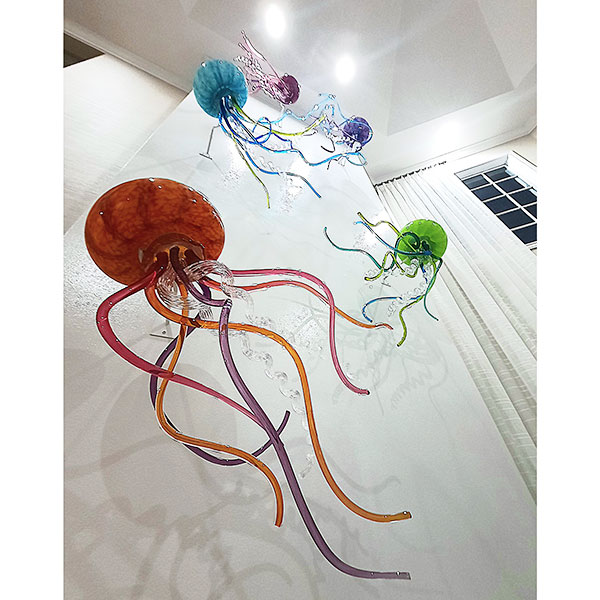
Onwards and Upwards Jellyfish Josh Fradis
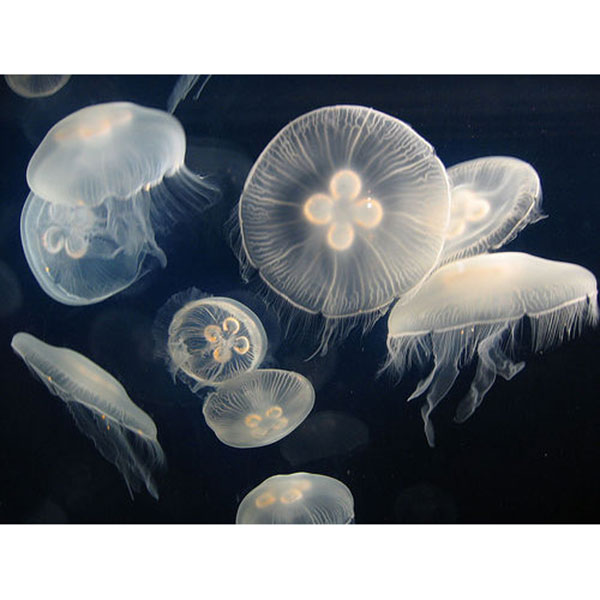
Moon Jellyfish
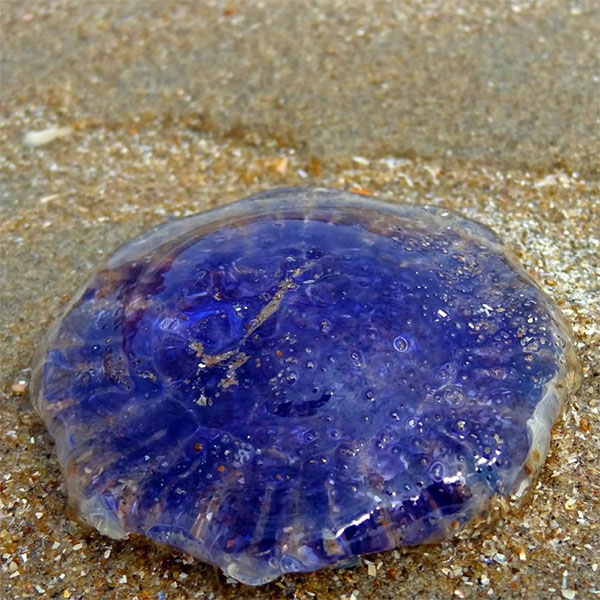
Blue Jellyfish

Ernst Haeckel
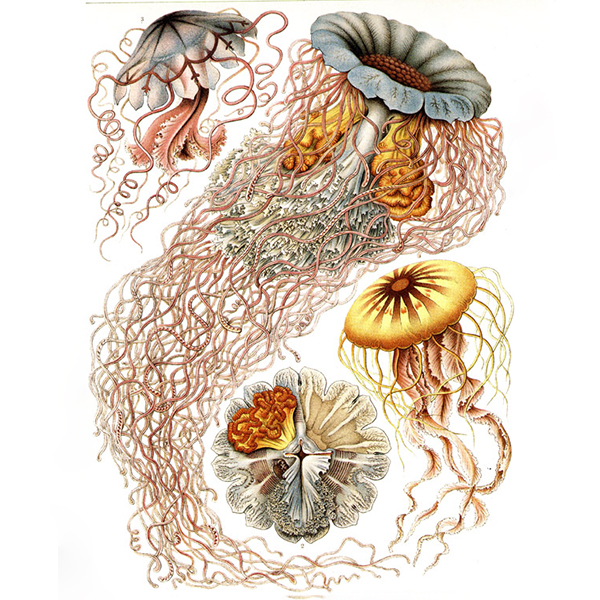
Jellyfish Ernst Haeckel
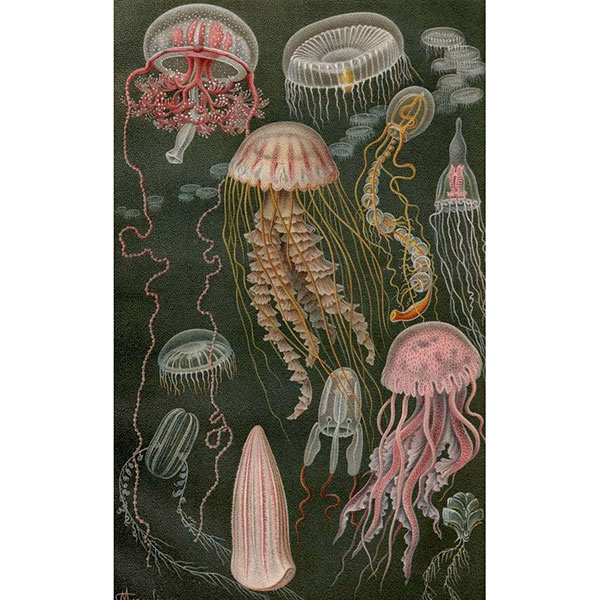
Jellyfish Adolphe Philippe Millot
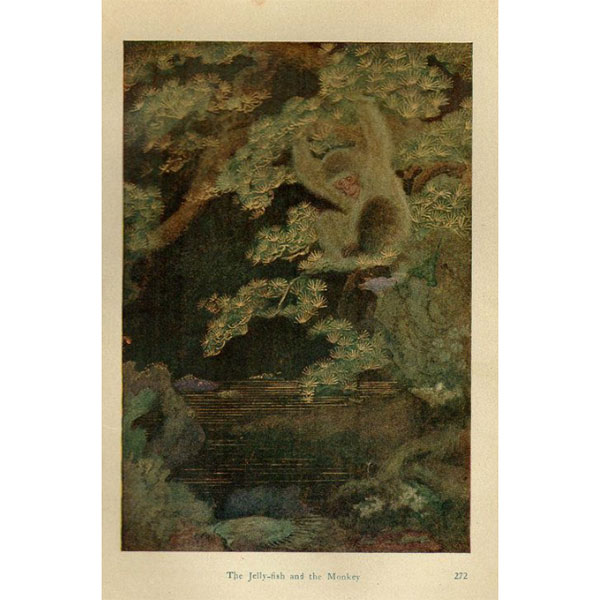
Jellyfish and the Monkey
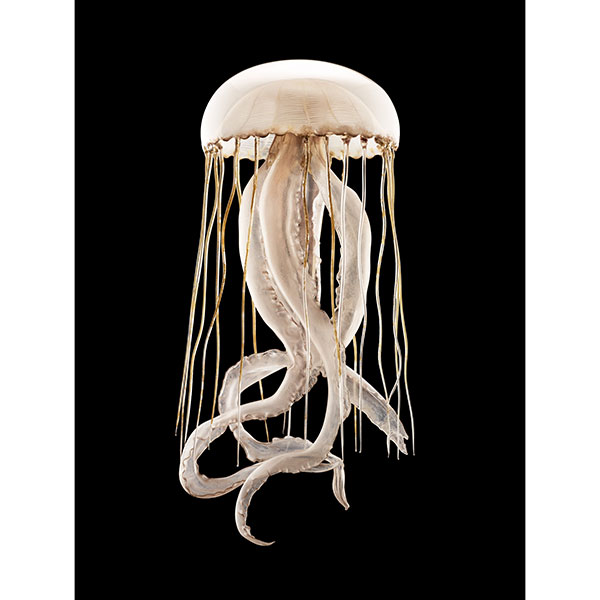
Blaschka Jellyfish
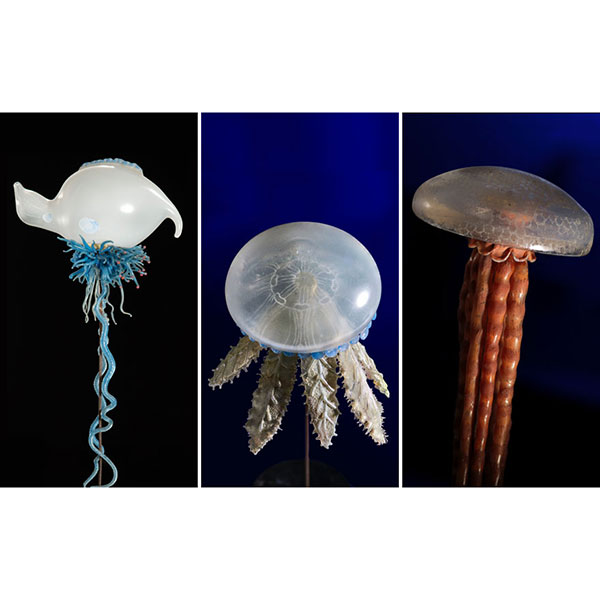
Blaschka Jellyfish Christies

Dario Frare
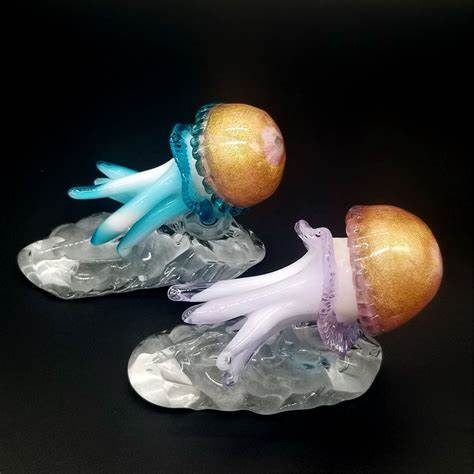
Jellyfish Dario Frare
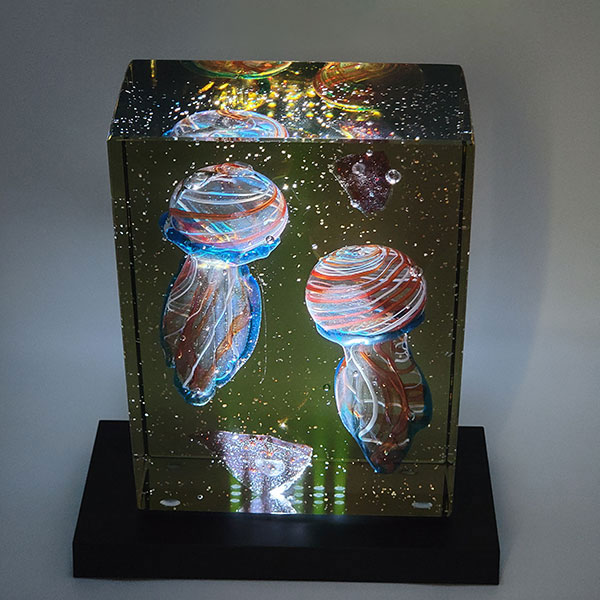
Sommerso Glass Aquarium Alberto Dona
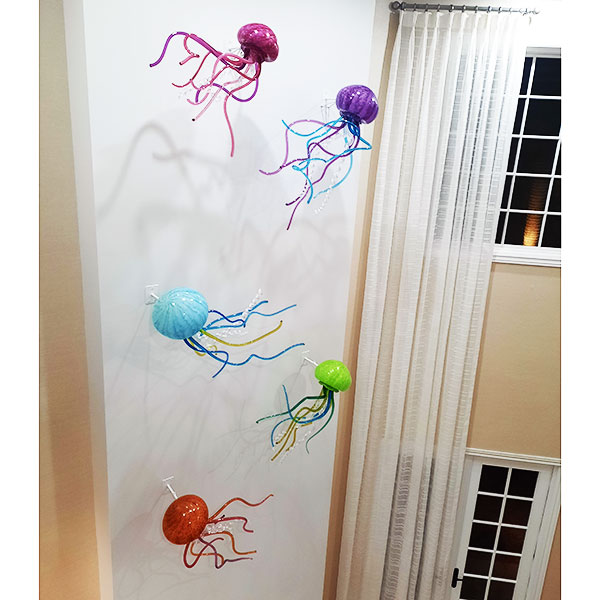
Onwards and Upwards Jellyfish Josh Fradis
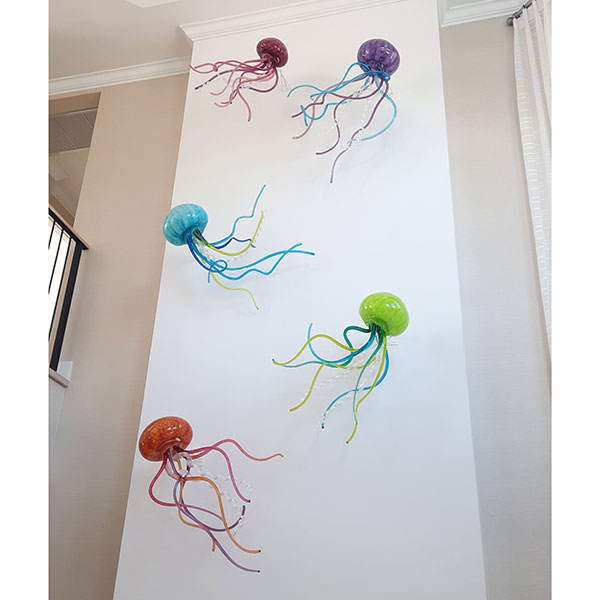
Onwards and Upwards Jellyfish Josh Fradis
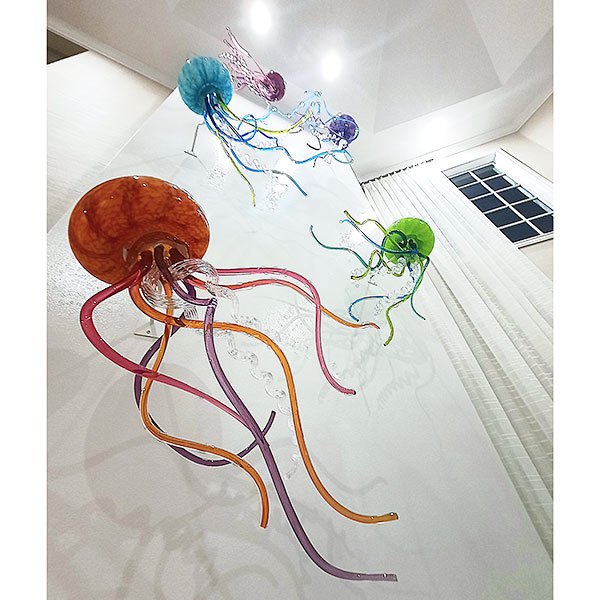
Onwards and Upwards Jellyfish Josh Fradis
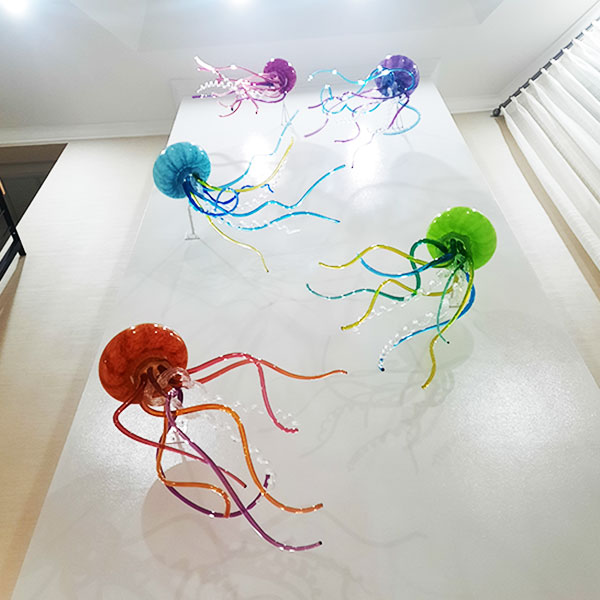
Onwards and Upwards Jellyfish Josh Fradis
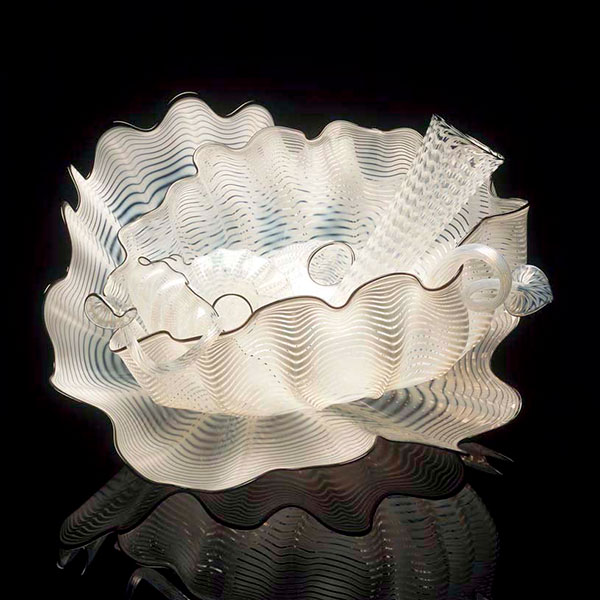
Chihuly Seaform Set
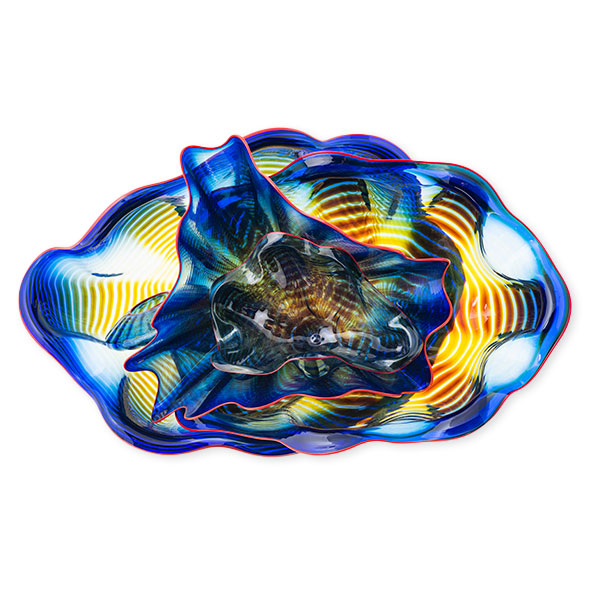
Chihuly Seaform
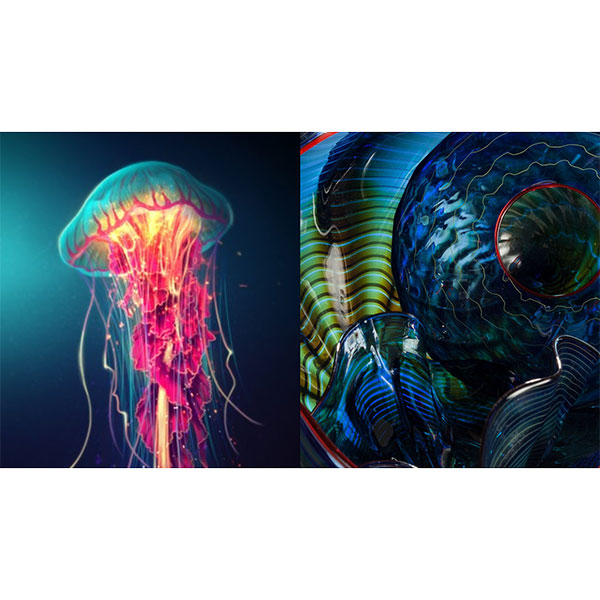
Chihuly detail from Jellyfish
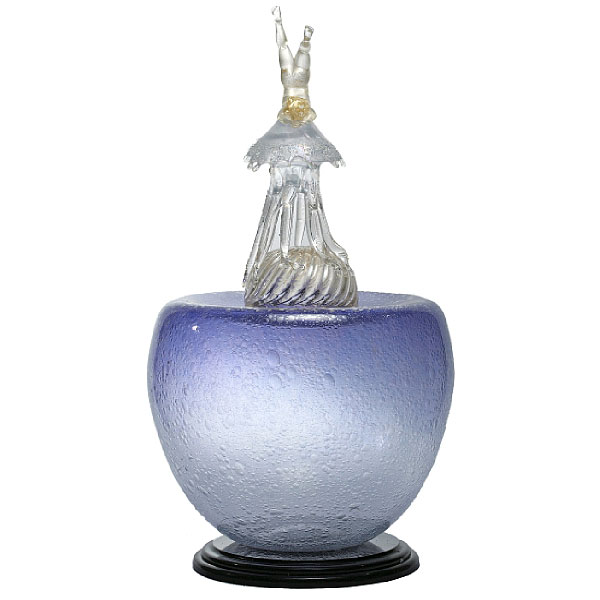
Venetian Jellyfish with Putto Chihuly and Signoretto
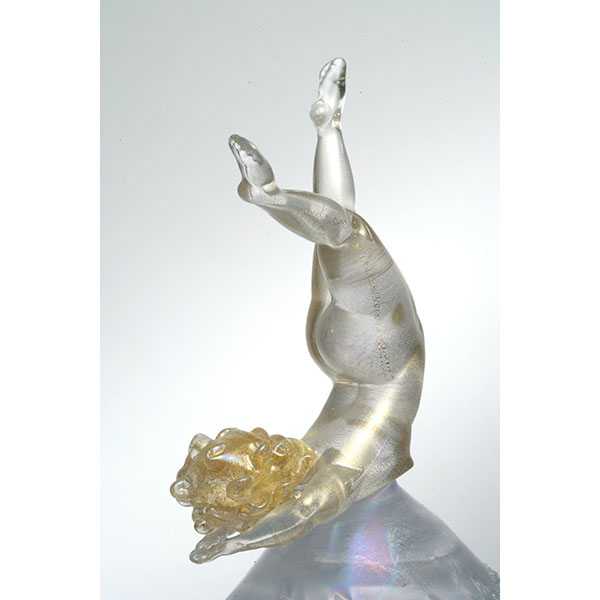
Chihuly detail from Jellyfish
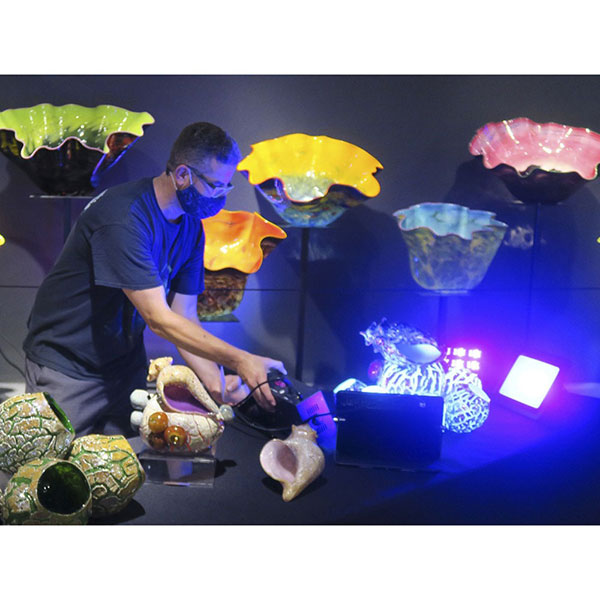
Josh Fradis at WMODA
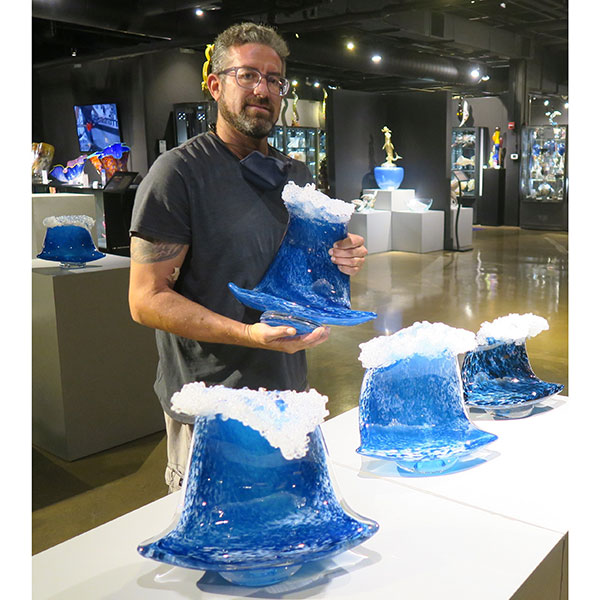
Josh Fradis with Waves WMODA
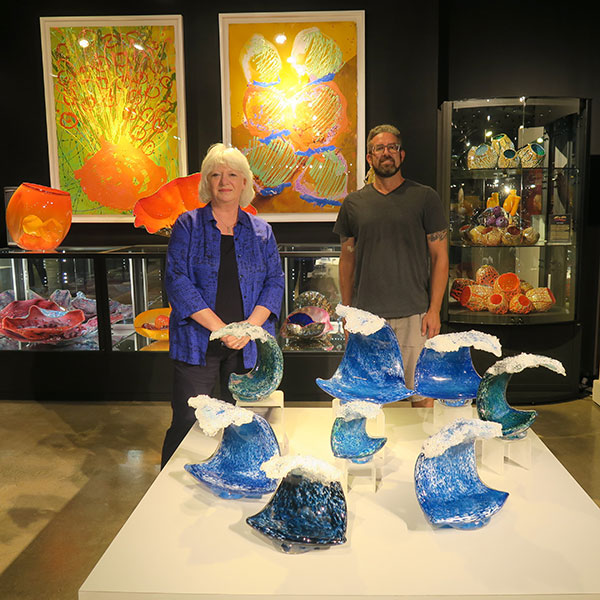
Josh Fradis and Louise Irvine Tidal Wave
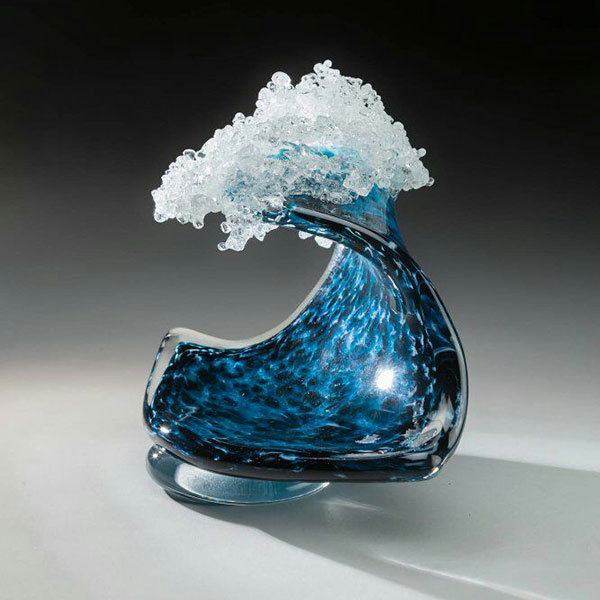
Josh Fradis Wave WMODA
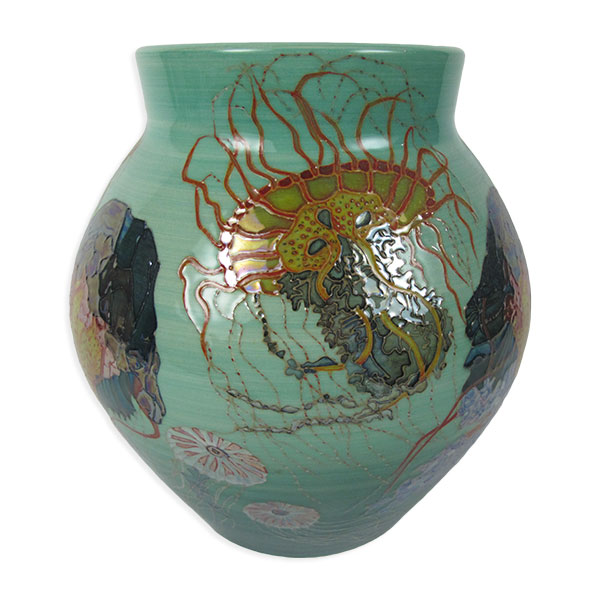
Dennis Chinaworks Jellyfish Vase S. Tuffin
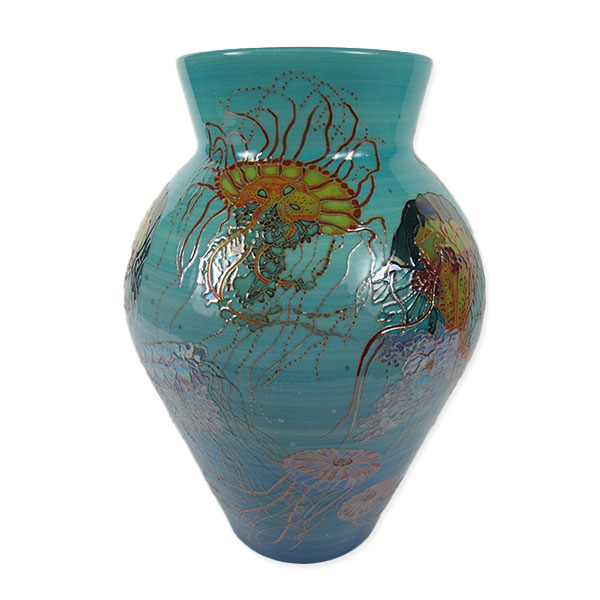
Dennis Chinaworks Jellyfish Vase S. Tuffin
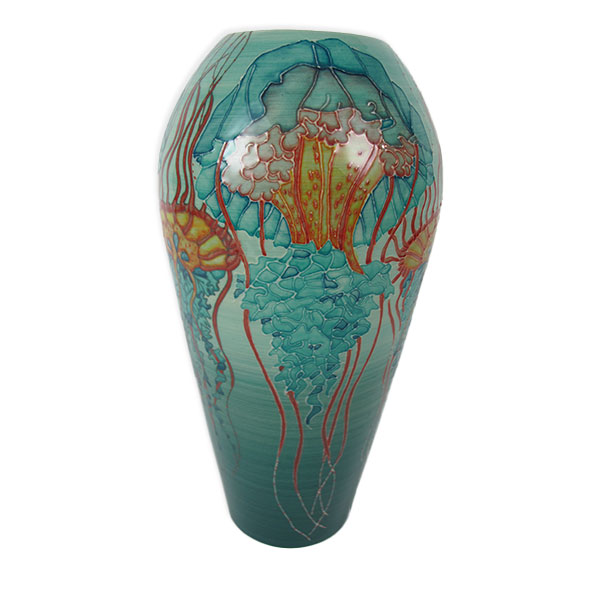
Dennis Chinaworks Jellyfish Vase S. Tuffin

Dennis Chinaworks Jellyfish Vase S. Tuffin
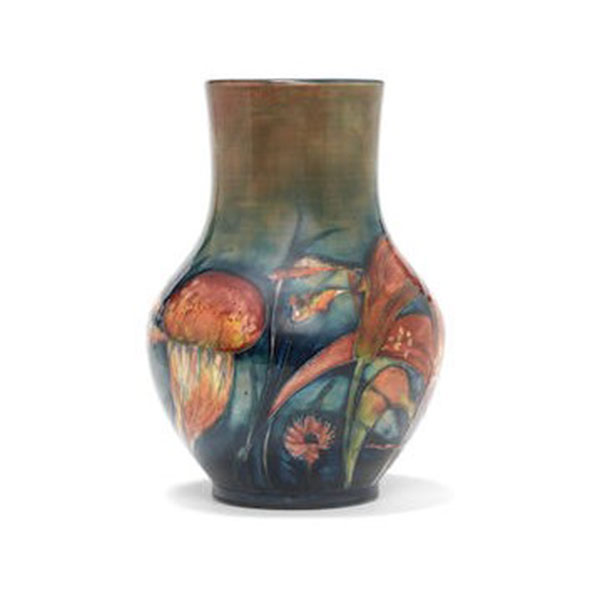
Moorcroft Jellyfish Vase
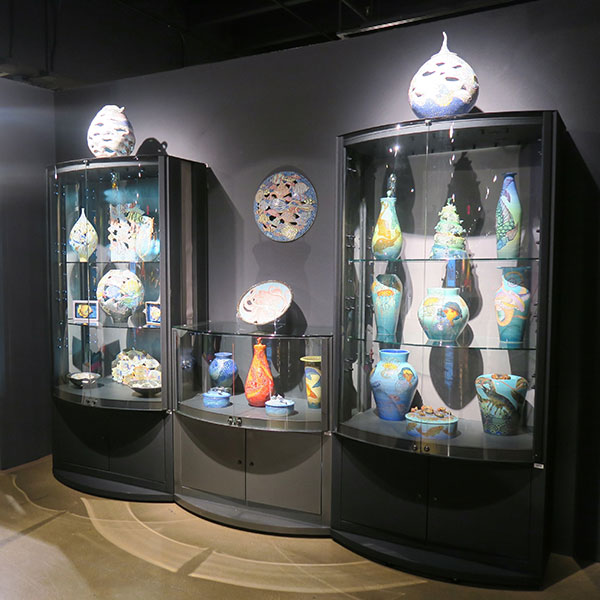
Dive into WMODA Exhibit
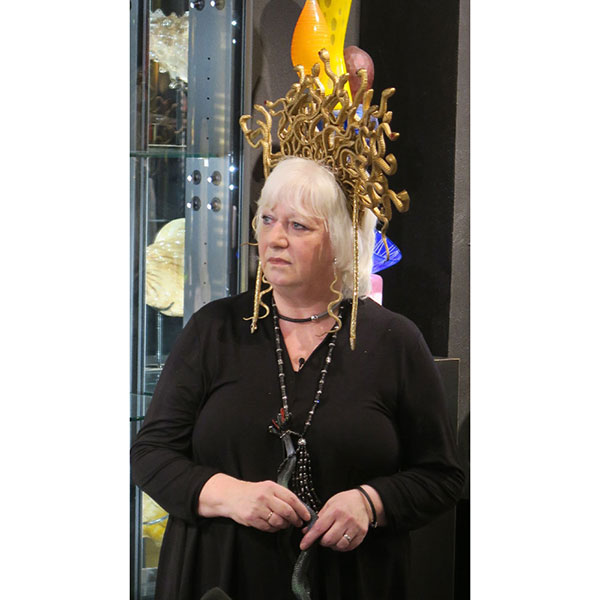
Louise as Medusa
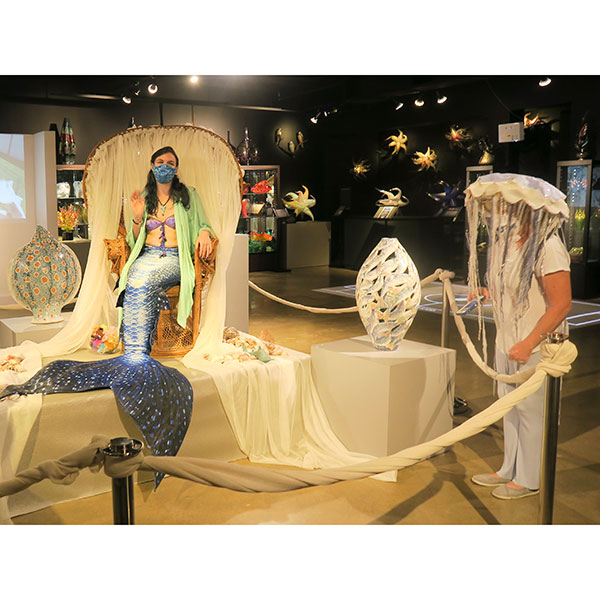
Rhanu and Betsy Alexis as a Jellyfish
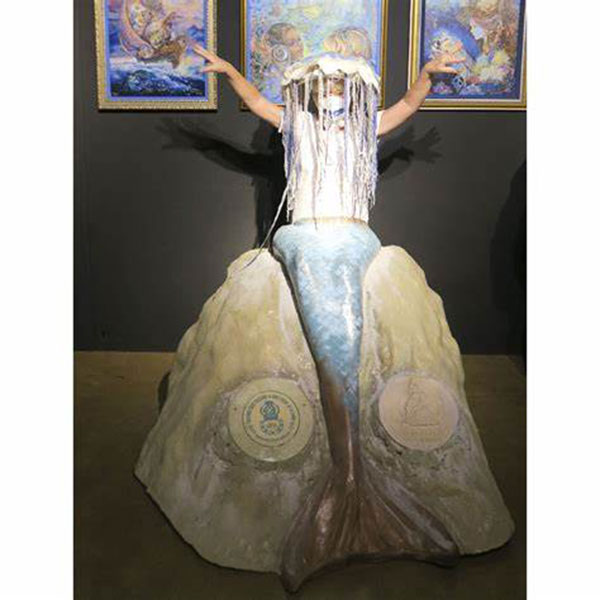
Betsy Alexis as a Jellyfish in the Mermaid Selfie Tail
